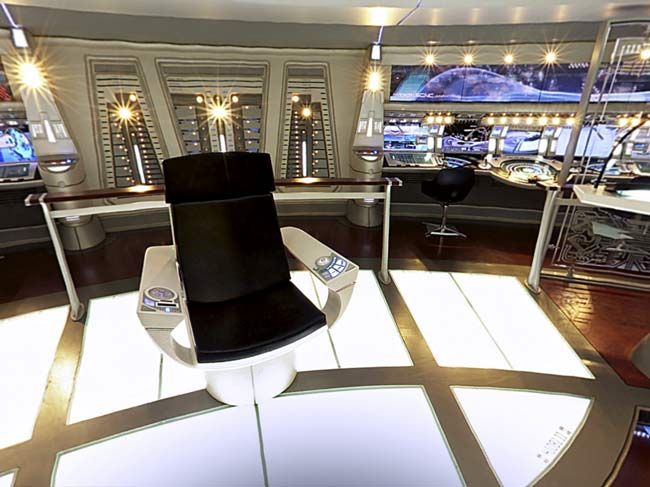'Star Trek' Tricorder Scans for Life on Space Station

Astronauts on the space station have their own version of the "Star Trek" tricorder to search for signs of life, whether that life is from Earth or of extraterrestrial origin – at least if it's life as we know it. The real device appears to be similar in size and basic purpose to the one in the new movie, which opens Friday in the United States.
The handheld device acts as a miniature biology lab that allows space station residents to get results on a display screen within 15 minutes, after swabbing whatever surface they care to sample and mixing the swabbed material with liquid.
"They like the fact that they can get a result themselves in orbit and not be completely reliant upon the ground or have to send samples back to Earth," said Jake Maule, a biologist with BAE Systems at NASA's Marshall Space Flight Center in Alabama.
No instant-scan capabilities exist yet but the real 21st century tricorder has a handheld advantage over the shoulder-strap tricorder of the original "Star Trek" series that took place in the 23rd century. However, the tricorder of the new "Star Trek" movie also appears to be a handheld device.
Other researchers have developed a different device that resembles the medical version of a "Star Trek" scanner – a smart phone-compatible ultrasound probe that can image the human body.
In-flight testing
NASA first launched the Lab-on-a-Chip Application Development-Portable Test System (LOCAD-PTS) on the space shuttle Discovery in December 2006. Astronaut Sunita "Suni" Williams first tried out the device by swabbing the palm of her hand to get a strong positive reading, before testing some ultraclean water to get a negative reading.
Sign up for the Live Science daily newsletter now
Get the world’s most fascinating discoveries delivered straight to your inbox.
Williams ultimately found endotoxins, a marker of certain bacteria, throughout the space station and especially in exercise, hygiene, sleeping and dining areas.
Space station residents also performed the first spacewalk swab in March to see if biological material from Earth might survive the harsh space environment. Understanding the spread of biological material in space could help scientists better avoid potential contamination of future missions to the moon and Mars, Maule said.
Maule worked with Norman Wainwright, a biologist and research director at Charles River Laboratories, to develop LOCAD-PTS. Both conducted tests with the device on NASA's "vomit comet" aircraft that dives to simulate zero-g conditions.
"We learned kind of firsthand," Wainwright told LiveScience. "You can't simply take a liquid sample and transfer it to your instrument as easily as you can do on your desk."
No bacteria left behind
Testing with LOCAD-PTS requires swapping in different thumb-sized plastic cartridges. Each cartridge carries dried enzymes and colorless dye that turns yellowish-green when it detects bacteria and fungi.
Scientists derived the sensitive enzymes from the primitive but highly sensitive immune systems of ancient horseshoe crabs. Just one bacterium can set off the enzymes.
"The quantities required are so small that it's less than a picogram [trillionth of a gram] per millimeter," Wainwright explained.
The interchangeability and future cartridges would allow astronauts to monitor their space habitats for common molds. Astronauts currently have three cartridges available to them for detecting levels of gram-positive and gram-negative bacteria, as well as fungi.
Autonomous exploration
That all may still sound like work when compared to scanning the environment and getting quick results, as "Star Trek" characters can do. But even if the 21st century tricorder does not quite measure up to Starfleet standards, the device easily beats the traditional method of detecting bacteria – sitting around and growing bacterial cells on Petri dishes.
Astronauts also like being able to get results themselves in orbit, the researchers noted. Future models could include the ability to detect harmful pathogens such as E. coli or salmonella, not to mention ATP energy molecules associated with living things.
"They actually see the results before Norm and I do, which is what we're trying to work towards for moon and Mars missions where the crew has more autonomy," Maule said.
Putting it that way, even a young Captain Kirk or Dr. McCoy might approve.











